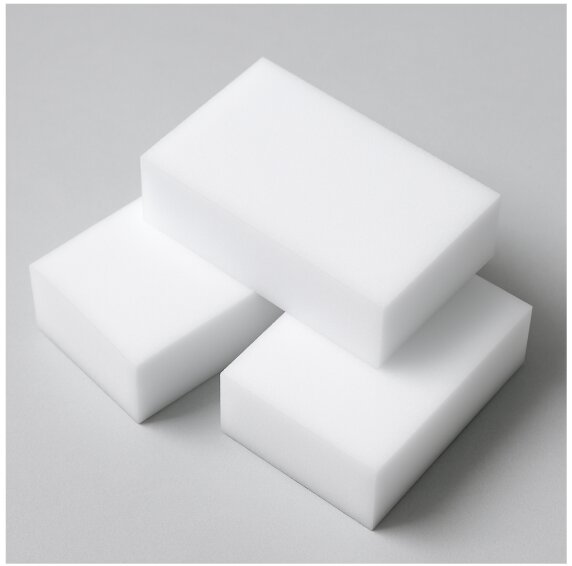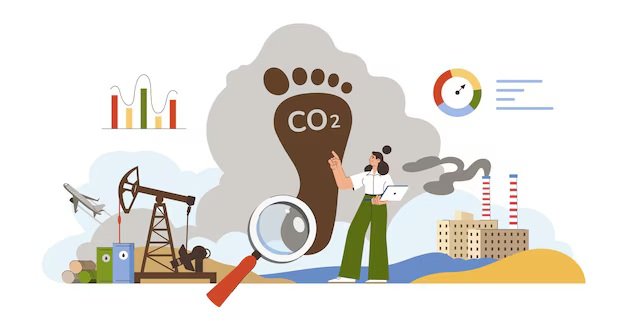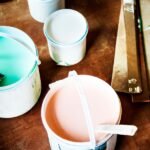Environmental Impact of Magic Sponges
If you’ve ever used a magic sponge—like the Mr. Clean Magic Eraser—you probably know how satisfying it is to wipe away crayon scribbles, greasy fingerprints, or scuff marks with just a bit of water. It feels like cleaning sorcery; there are no chemicals or scrubbing. But here’s the thing: while these sponges may make our lives easier, they could be making life harder for the environment.
Magic sponges are popular for good reason—they’re affordable, effective, and super easy to use. But very few of us stop to think about what they’re actually made of or what happens to them once they’ve scrubbed their last stain. Beneath their convenience lies a hidden environmental cost that’s rarely discussed.
In this guide, we’ll look at what these sponges are made of, what kind of impact they have on the environment, and what you can do if you’re looking for a cleaner that’s both tough on grime and gentle on the Earth.

In This Article
- What Are Magic Sponges Made Of?
- The Environmental Footprint of Melamine Foam
- Health Concerns: Not Just an Environmental Issue
- Greener Alternatives to Magic Sponges
- Comparing the Environmental Impact of Common Cleaning Products
- Tips for Responsible Use (If You Still Prefer Magic Sponges)
- Actionable Takeaways
- Conclusion:
What Are Magic Sponges Made Of?
Despite the name, there’s no real “magic” in a magic sponge. It all comes down to a clever bit of science. These sponges are made from a plastic material called melamine foam. This foam has a super-fine, almost sandpaper-like texture, which is what makes it so good at scrubbing off dirt without extra cleaners.
At the heart of it, magic sponges are composed of:
- Melamine-formaldehyde resin – This is the core material. It gives the sponge its structure and durability. However, melamine is a petrochemical product, and formaldehyde is a known irritant. Their production can have environmental and health impacts if not properly controlled.
- Water – When wet, the sponge softens just enough to activate the abrasive texture that makes it so effective. No other chemicals are strictly necessary.
- Additives (optional) – Some versions include mild detergents or surfactants to boost cleaning power. These can vary by brand.
The Environmental Footprint of Melamine Foam
1. Manufacturing and Emissions
Melamine foam is a product of petrochemical processes, primarily derived from fossil fuels. The production involves combining melamine and formaldehyde, both of which are associated with environmental and health concerns. Formaldehyde, for instance, is a volatile organic compound that can contribute to air pollution and has been linked to health issues upon prolonged exposure.
The manufacturing process is energy-intensive, leading to substantial greenhouse gas emissions. According to a 2025 report by BASF, efforts are being made to reduce the carbon footprint of melamine foam production. Their Basotect® EcoBalanced foam, for example, boasts up to a 50% reduction in product carbon footprint by utilising renewable feedstocks and green electricity.
Despite these advancements, the majority of melamine foam products in the market are still produced using traditional methods, contributing to the global carbon footprint and perpetuating reliance on non-renewable resources.
2. End-of-Life Waste
One of the significant environmental challenges of melamine foam is its non-biodegradable nature. Unlike natural sponges that decompose over time, melamine foam persists in the environment for decades. When disposed of, these sponges often end up in landfills, occupying space and potentially leaching chemicals into the surrounding soil and water systems.
A 2024 study published in Environmental Science & Technology highlighted that melamine sponges, when subjected to abrasion, release microplastic fibres. These microplastics can infiltrate water systems, posing risks to aquatic life and, by extension, human health.
3. Microplastic Pollution
The same 2024 study shed light on the microplastic pollution associated with melamine foam. It found that melamine sponges, when used, release microplastic fibres into the environment. These fibres, composed of poly(melamine-formaldehyde), can enter water systems, be ingested by aquatic organisms, and potentially make their way into the human food chain.
The study estimated that a single sponge could release approximately 6.5 million fibres per gram of worn-out sponge. Considering global usage, this translates to over a trillion microplastic fibres released into the environment each month.
Health Concerns: Not Just an Environmental Issue
Melamine foam is produced from melamine-formaldehyde resin, a petrochemical product derived from fossil fuels. Concerns arise when it is used on items that come into contact with food, as residue from degraded foam can contaminate surfaces if not rinsed properly.
The health risks associated with melamine exposure are well-documented. According to Health Canada, melamine is considered harmful to human health, with potential effects including kidney damage and reproductive toxicity. The U.S. Food and Drug Administration (FDA) has also highlighted that melamine contamination above certain levels can lead to kidney stones and kidney failure.
Formaldehyde, another component of melamine foam, is classified by the International Agency for Research on Cancer (IARC) as a known human carcinogen. Prolonged exposure to formaldehyde can cause respiratory issues and skin irritation.
To minimise health risks, it’s advisable to avoid using melamine foam sponges on surfaces that come into direct contact with food. If used, ensure thorough rinsing of the surface afterwards. Additionally, consider using alternative cleaning tools made from natural or food-safe materials for kitchen and dining areas.
Greener Alternatives to Magic Sponges
If you’re looking to reduce your environmental impact without compromising on a clean home, the good news is that there are plenty of eco-friendly alternatives to magic sponges. These greener options not only clean effectively but also break down naturally or last longer, meaning less waste and a happier planet.
One of the most popular alternatives is the natural sponge, which comes from renewable marine or plant sources. Unlike melamine foam, these sponges are fully biodegradable and compostable at the end of their life, making them a win for zero-waste households.
Then there are loofahs, which might remind you of bath time, but work wonders in the kitchen too. Loofahs are made from the fibrous skeleton of the loofah gourd, a plant in the cucumber family. They’re firm enough to scrub pots and pans, yet gentle on surfaces, and they decompose naturally in compost bins.
Reusable bamboo cloths are another game-changer. Made from sustainable bamboo fibres, these cloths are durable, washable, and ideal for everyday spills and messes. Because you can toss them in the laundry, they replace countless single-use products over time.
Lastly, cellulose sponges, made from wood pulp, are an excellent plant-based swap. They’re soft, absorbent, and more eco-friendly than synthetic options. Some even come packaged without plastic.
Comparing the Environmental Impact of Common Cleaning Products
| Product | Biodegradable | Contains Petrochemicals | Produces Microplastics | Average Lifespan | Recyclable |
|---|---|---|---|---|---|
| Magic Sponge | No | Yes | Yes | Low (1–3 uses) | No |
| Cellulose Sponge | Yes | No | No | Medium (1–2 months) | Sometimes (if no synthetic binders) |
| Bamboo Cloth | Yes | No | No | High (6+ months) | Yes |
| Microfiber Cloth | No | Yes | Yes | High (6+ months) | Sometimes (dependent on the facility) |
Tips for Responsible Use (If You Still Prefer Magic Sponges)
If you still find magic sponges too handy to give up, you’re not alone. Their ease and effectiveness are hard to beat. But just like anything else we rely on, it’s important to use them mindfully, especially once we understand the environmental and potential health risks they come with. Here are a few simple, practical tips to help you get the most out of your sponges while being a little kinder to the planet.
First, cut them into smaller pieces. One full-size sponge can often be more than you need for a small job. By trimming it down, you stretch each sponge further, reduce waste, and keep tiny broken pieces to a minimum.
Next, reserve them for the really tough stains. Magic sponges are best saved for the tasks that other tools can’t handle—like crayon marks on walls or scuff marks on floors. For everyday wiping or gentle cleaning, opt for reusable cloths or natural sponges.
Dispose of them responsibly once they’ve worn out. Magic sponges aren’t recyclable or biodegradable, so tossing them directly into the trash adds to landfill waste. Instead, wrap them in an old newspaper or scrap paper before discarding. This helps contain any leftover micro-particles that might otherwise scatter.
Most importantly, avoid using them in the kitchen, especially on plates, cutting boards, or countertops where food is prepared. Since melamine foam breaks down into micro-fragments and may contain chemical residues, it’s not worth the risk of cross-contamination with food.
Actionable Takeaways
- Educate Yourself: Start by checking the label before you buy any cleaning product. Learn what it’s made of. If you see words like “melamine” or “formaldehyde,” take a second to think about whether you really need it or if there’s a better option.
- Limit Use: Magic sponges work well, but they’re not always necessary. Reserve them for tough jobs and spot treatments instead of daily cleaning.
- Choose Alternatives: Look into biodegradable cellulose sponges or washable bamboo cloths.
- Push for Policy: When possible, support community efforts and policies that limit single-use plastic or synthetic products. Consumer voices really do influence change.
- Spread the Word: Share what you’ve learned with friends and family. Sometimes, all it takes is one conversation to start a chain reaction of better choices.
Conclusion:
Magic sponges are undeniably effective, but their hidden costs demand our attention. From their petrochemical roots to their contribution to microplastic pollution, they represent a larger issue: our dependence on disposable convenience.
Making a switch doesn’t mean giving up on a clean home. It means embracing smarter, sustainable practices — ones that safeguard both your family and the environment.
As we rethink our cleaning habits, let’s remember that the smallest changes can lead to a cleaner, greener planet.







